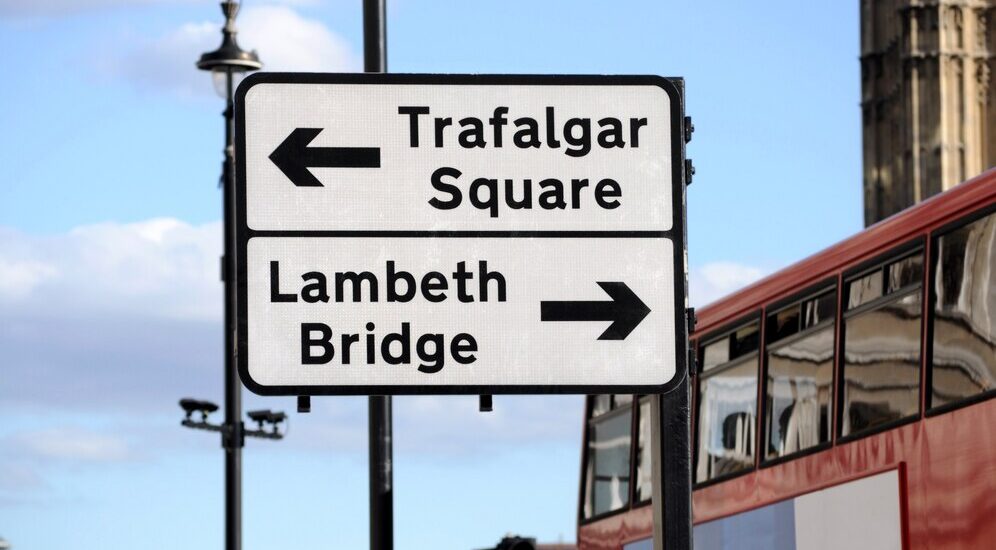In Europe, various types of road signs are used to provide drivers with essential instructions and warnings on the roads. Some of the most common types of road signs in Europe include:
- Speed limit signs: These signs indicate the maximum allowable speed on a specific road section.
- Priority signs: These signs determine who has the right of way at intersections and other locations.
- Warning signs: They alert drivers to potential hazards or changes on the road, such as turns, railway crossings, and dangerous curves.
- Information signs: These signs provide useful information about local services, routes, distances, and other essential details.
- Prohibition signs: These signs indicate prohibitions, such as no parking, no U-turn, or restrictions on certain types of vehicles.
Understanding these types of road signs will help you comply with regulations and navigate the roads during your travels throughout Europe.
Speed limit signs
The main differences between speed limit signs in the United States and Europe lie in the measurement units and appearance. In the United States, speed limits are typically indicated in miles per hour (mph) and displayed in a rectangular white sign with black lettering. Conversely, in Europe, speed limits are commonly shown in kilometers per hour (km/h) and presented in a circular red-bordered sign with the numerical speed limit displayed in black. While both regions use different measurement units and sign designs, the purpose of these signs remains the same: to inform drivers of the maximum permissible speed on specific road segments.
Examples speed limit signs in Europe
These examples showcase the typical designs and appearances of speed limit signs in Europian countries:

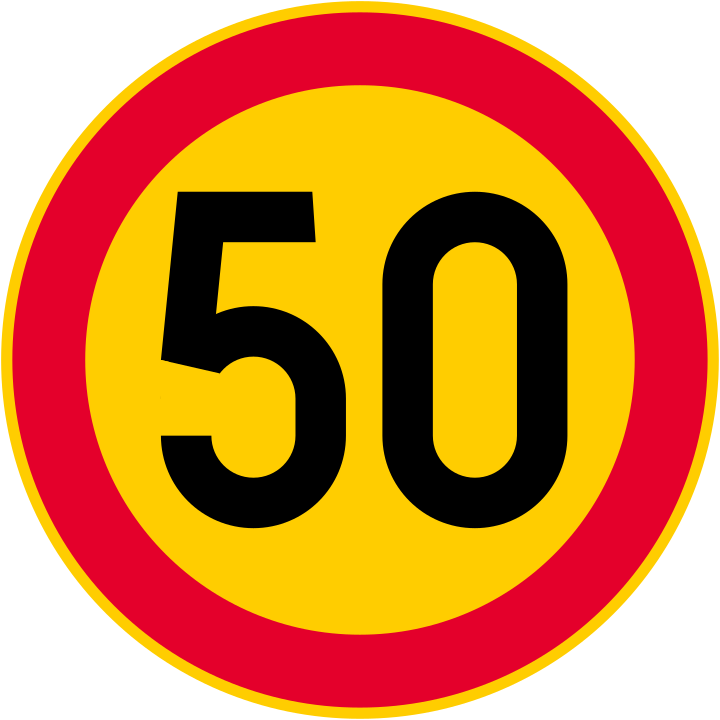
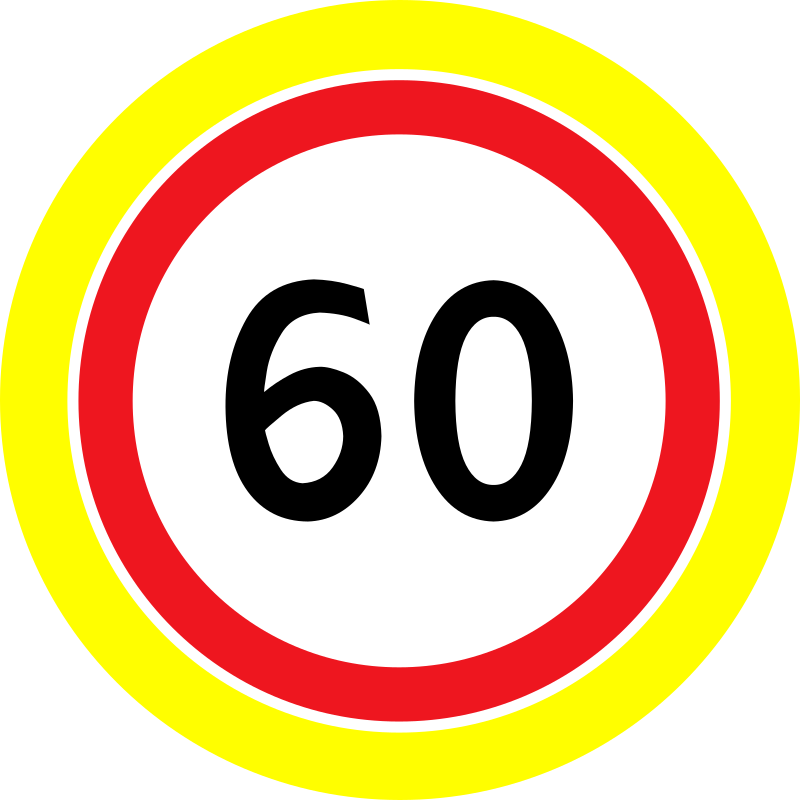
And how signs often look in real life:


Examplex speed limit zone signs
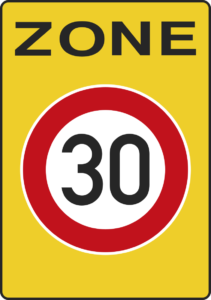
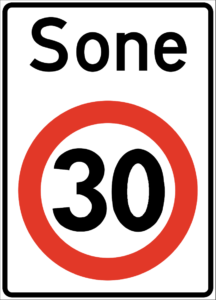

Priority signs in Europe
Priority signs in Europe typically include the following types:
- Priority road sign: This sign indicates that the road it applies to is a priority road, and drivers on this road have the right of way at intersections.
- Yield sign: This triangular sign alerts drivers to give way to traffic on the intersecting road, indicating that they must yield to other vehicles before proceeding.
- Stop sign: This sign indicates that drivers must come to a complete stop before proceeding and yield to other vehicles that have the right of way.
- Other.
Stop sings:


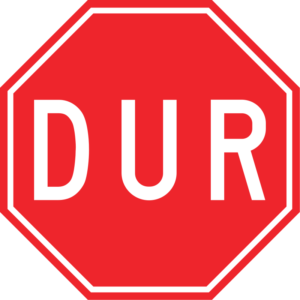
Stop ahead:

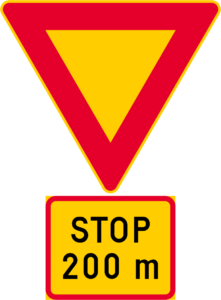

Give way:
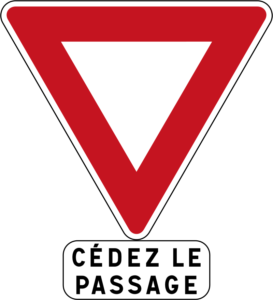
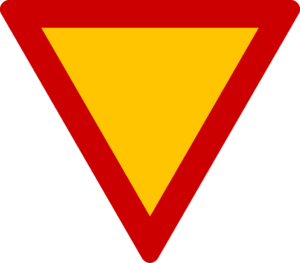

Give way ahead:
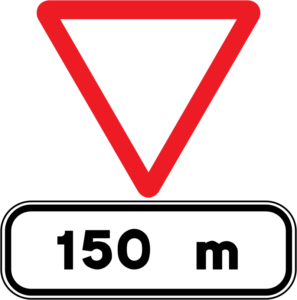
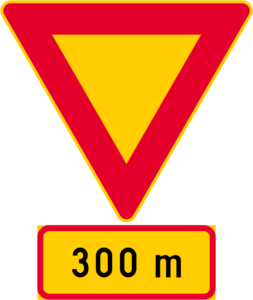

Priority road:

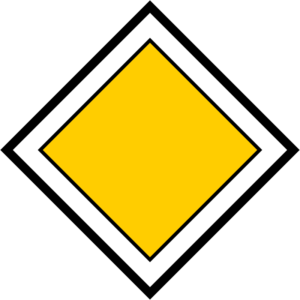
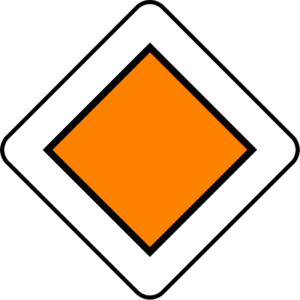
End of priority road:

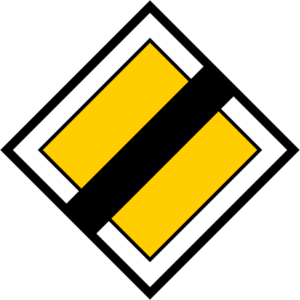
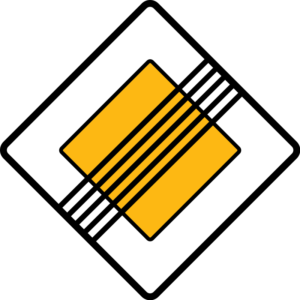
Give way to oncoming traffic:
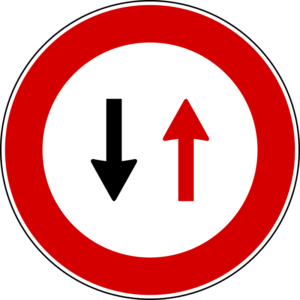

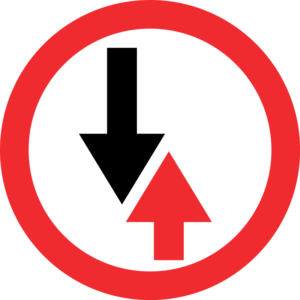
Priority over oncoming traffic
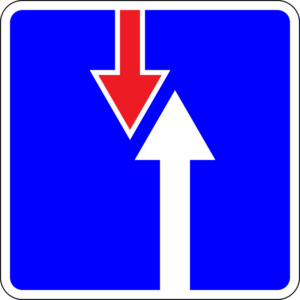

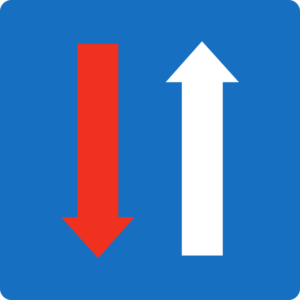
Warning signs in Europe
Warning signs in Europe serve to alert drivers of potential hazards or changes on the road. Some common types of warning signs in Europe include:
- Curve warning signs: These signs indicate upcoming curves or bends in the road, alerting drivers to adjust their speed accordingly.
- Railway crossing signs: These signs warn drivers of upcoming railway crossings, prompting them to be cautious and prepared to yield to oncoming trains.
- Slippery road signs: These signs notify drivers of slippery or hazardous road conditions, encouraging them to reduce speed and drive with caution.
- Pedestrian crossing signs: These signs signal areas where pedestrians frequently cross the road, reminding drivers to be vigilant and prepared to yield the right of way.
- Other.
Curve warning:


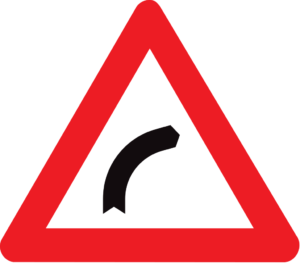
Or series of curves:
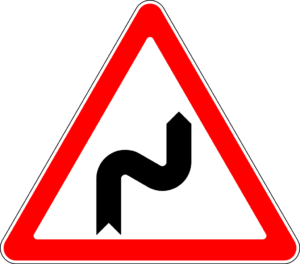

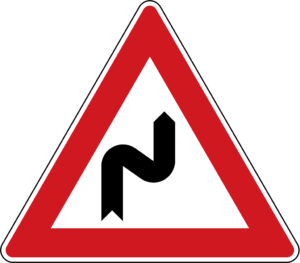
Crossroads (with a minor road):

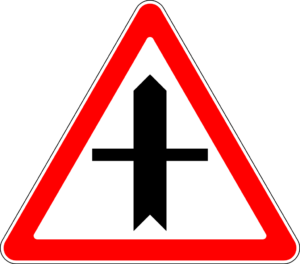

Crossroads (with priority to the right):

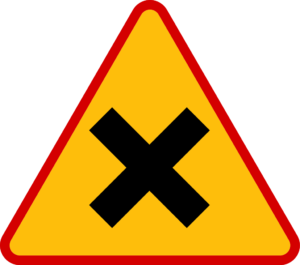
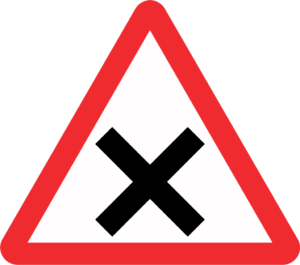
Roundabout:
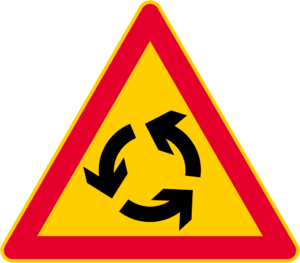
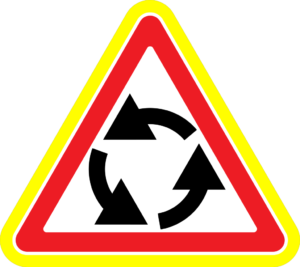

Level crossing with barriers ahead:

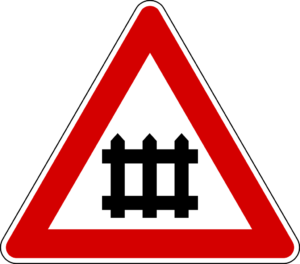
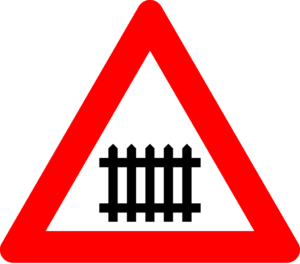
Level crossing without barriers ahead:
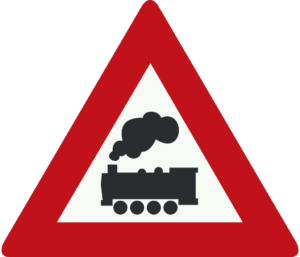

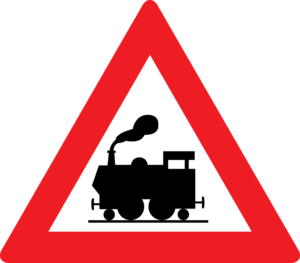
Slippery surface:



Pedestrian crossing:


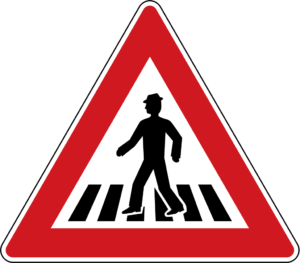
You also can meet other warning signs:
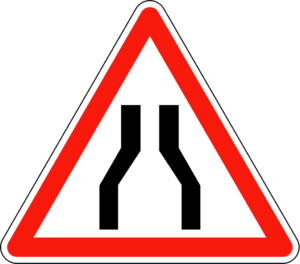

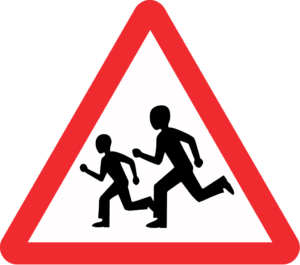
Information signs in Europe
Information signs in Europe play a vital role in providing drivers with essential information about local services, routes, distances, and other pertinent details. Some common types of information signs in Europe include:
- Services signs: These signs inform drivers about nearby amenities such as gas stations, restaurants, and rest areas.
- Direction signs: These signs offer guidance on route directions, including cities, towns, and other key destinations.
- Distance signs: These signs provide information about the distance to specific locations or destinations, helping drivers plan their journeys more effectively.
- Tourist attraction signs: These signs highlight notable tourist attractions, historical sites, or points of interest in the area, encouraging travelers to explore local landmarks.
- Other
Services signs:
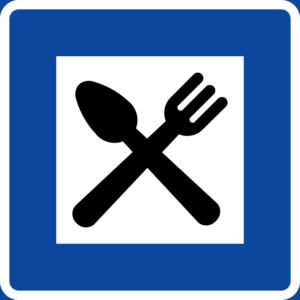
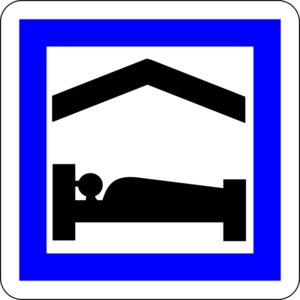
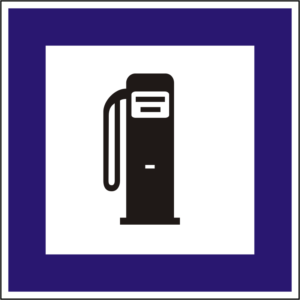
Direction and distance signs:


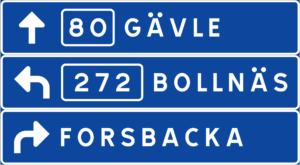
Tourist attraction signs in Europe:

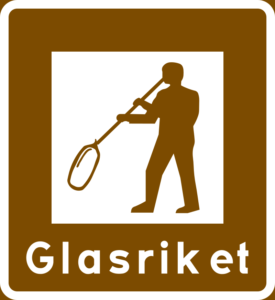

Prohibition signs in EU
Prohibition signs in the European Union (EU) serve to indicate various restrictions and prohibitions on the road. Some common types of prohibition signs in the EU include:
- No entry signs: These signs signify that entry is not permitted for certain types of vehicles or in specific areas.
- No parking signs: These signs indicate areas where parking is strictly prohibited, helping to maintain traffic flow and ensure road safety.
- No U-turn signs: These signs inform drivers that making a U-turn is not allowed at the designated location, promoting smooth traffic movement and reducing potential hazards.
- Weight limit signs: These signs display weight restrictions for certain vehicles, ensuring compliance with the specified limits and preventing damage to roads and infrastructure.
- Other.
No entry signs:
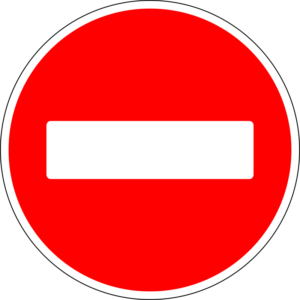
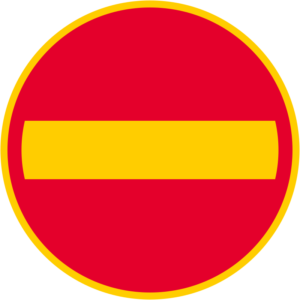

Also popular in Europe “no vehicles” signs:
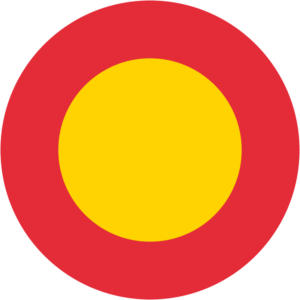

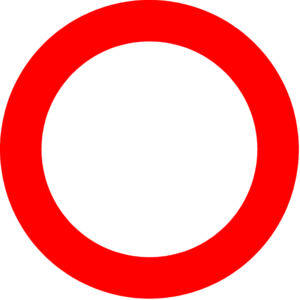
In Europe you need know No stopping, No parking signs:
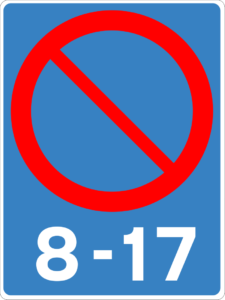
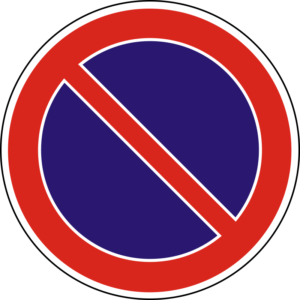
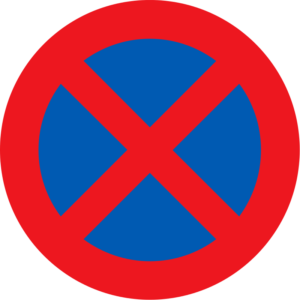
Additional signs that can accompany “No Parking” and “No Stopping” signs include:
- Time-based restrictions: These signs specify certain timeframes during which parking or stopping is prohibited, such as during rush hours or specific days.
- Loading zone restrictions: Signs indicating loading zones might accompany the “No Parking” sign, allowing short stops for the purpose of loading or unloading goods.
- Emergency vehicle access: Some signs may indicate that the area is reserved for emergency vehicles only, ensuring unobstructed access in case of emergencies.
- And other.
No turn and no u-turn signs:
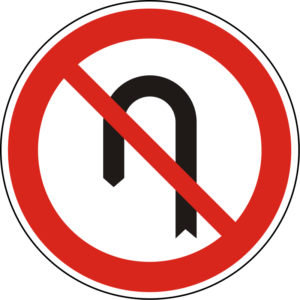
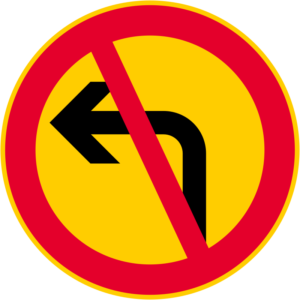
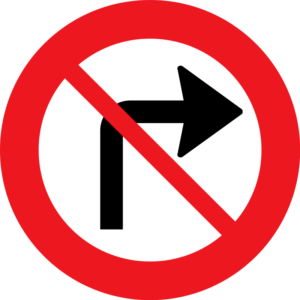
In conclusion, understanding the essential road signs is crucial for Americans driving in Europe to ensure road safety and avoid penalties for violations. Key signs to be familiar with include speed limit signs, priority signs, warning signs, information signs, and prohibition signs. Additionally, knowing supplementary signs related to parking and stopping restrictions is vital for complying with local regulations and avoiding potential accidents or fines. By being knowledgeable about these signs and their meanings, American drivers can navigate European roads more effectively and contribute to a safer and more secure driving experience.

Published October 27, 2023 • 51m to read

